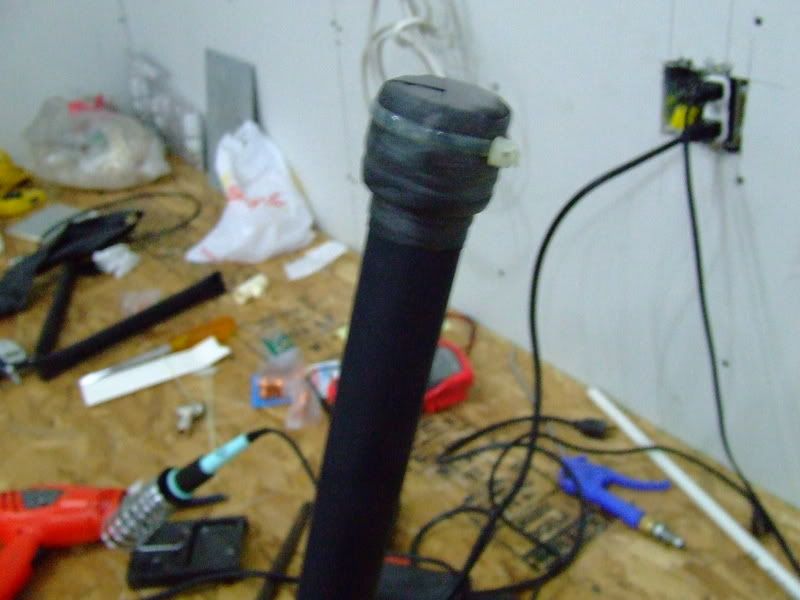Here's part 2 of my writeup. Sorta annoying that I can't post more than 12 pics, anyways, here goes. Please post replies at the end of this thread.
Step 8. Clean the surface of both elements, and drill the holes for the bolts.




Step 9. Tape the crap out of it with Stretch Tape and Super88

Step 10. Making the N connector for RG223. This is gonna mate to RG214 Coax with a mating N connector.


Step 11. Next thing i did was heat shrink the two elements with 1 1/4 inch heat wrap. Tape up the ends, and tape more on the "T".


Step 12. Done, looks pretty sweet. Its about 5 feet tall, gonna mount in on the garage

Reception was awesome. Worked REALLY well on VHF-AIR. usually with the rubber ducky i can hear the ATC, but not the pilot, and now i can hear the pilot and ATC the same. Last one was 80 miles away, 28000 Ft.
Also worked Extremely well on UHF around 300Mhz, 65Mhz as well.
Enjoy.
Step 8. Clean the surface of both elements, and drill the holes for the bolts.




Step 9. Tape the crap out of it with Stretch Tape and Super88

Step 10. Making the N connector for RG223. This is gonna mate to RG214 Coax with a mating N connector.


Step 11. Next thing i did was heat shrink the two elements with 1 1/4 inch heat wrap. Tape up the ends, and tape more on the "T".


Step 12. Done, looks pretty sweet. Its about 5 feet tall, gonna mount in on the garage

Reception was awesome. Worked REALLY well on VHF-AIR. usually with the rubber ducky i can hear the ATC, but not the pilot, and now i can hear the pilot and ATC the same. Last one was 80 miles away, 28000 Ft.
Also worked Extremely well on UHF around 300Mhz, 65Mhz as well.
Enjoy.

